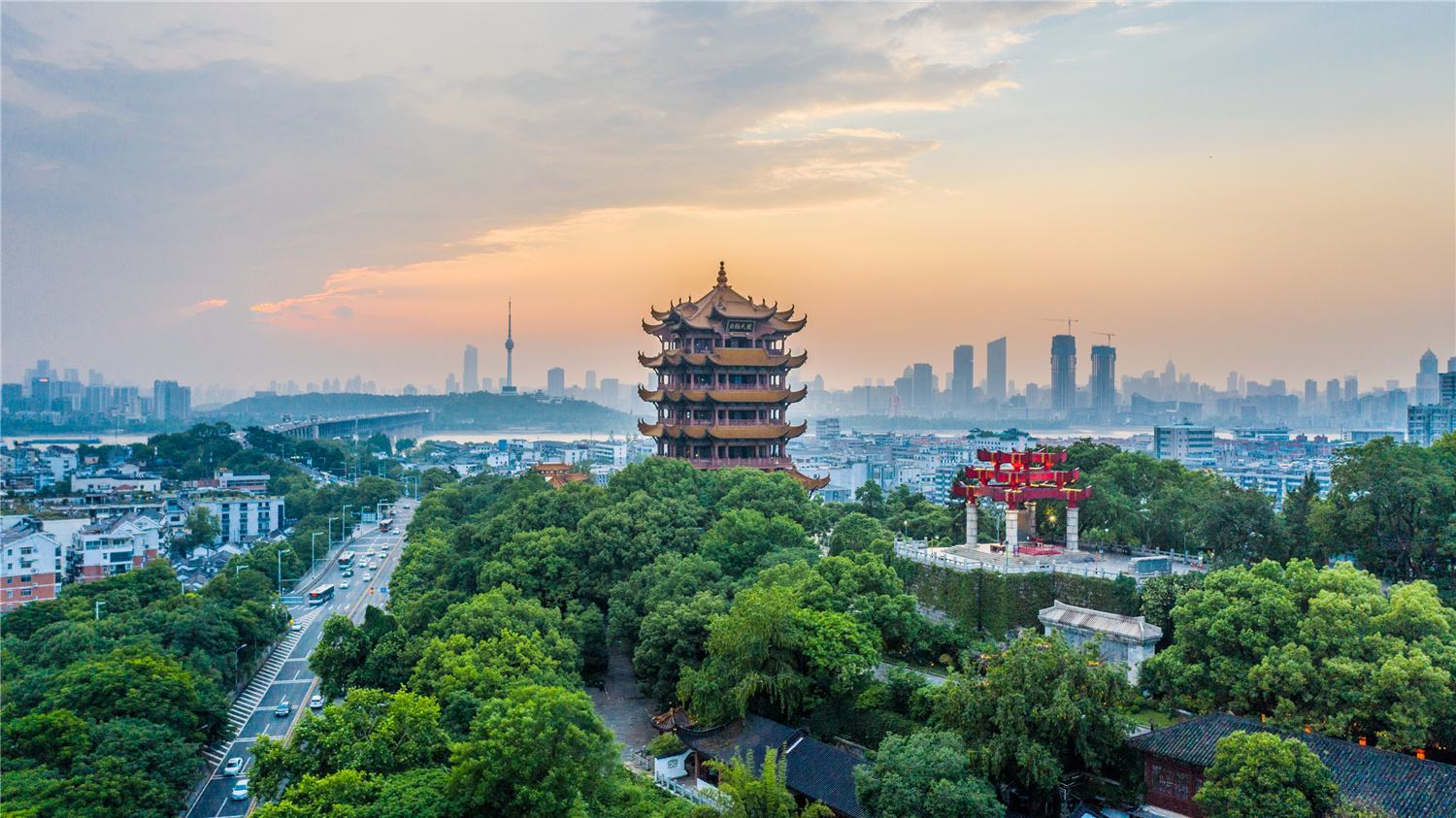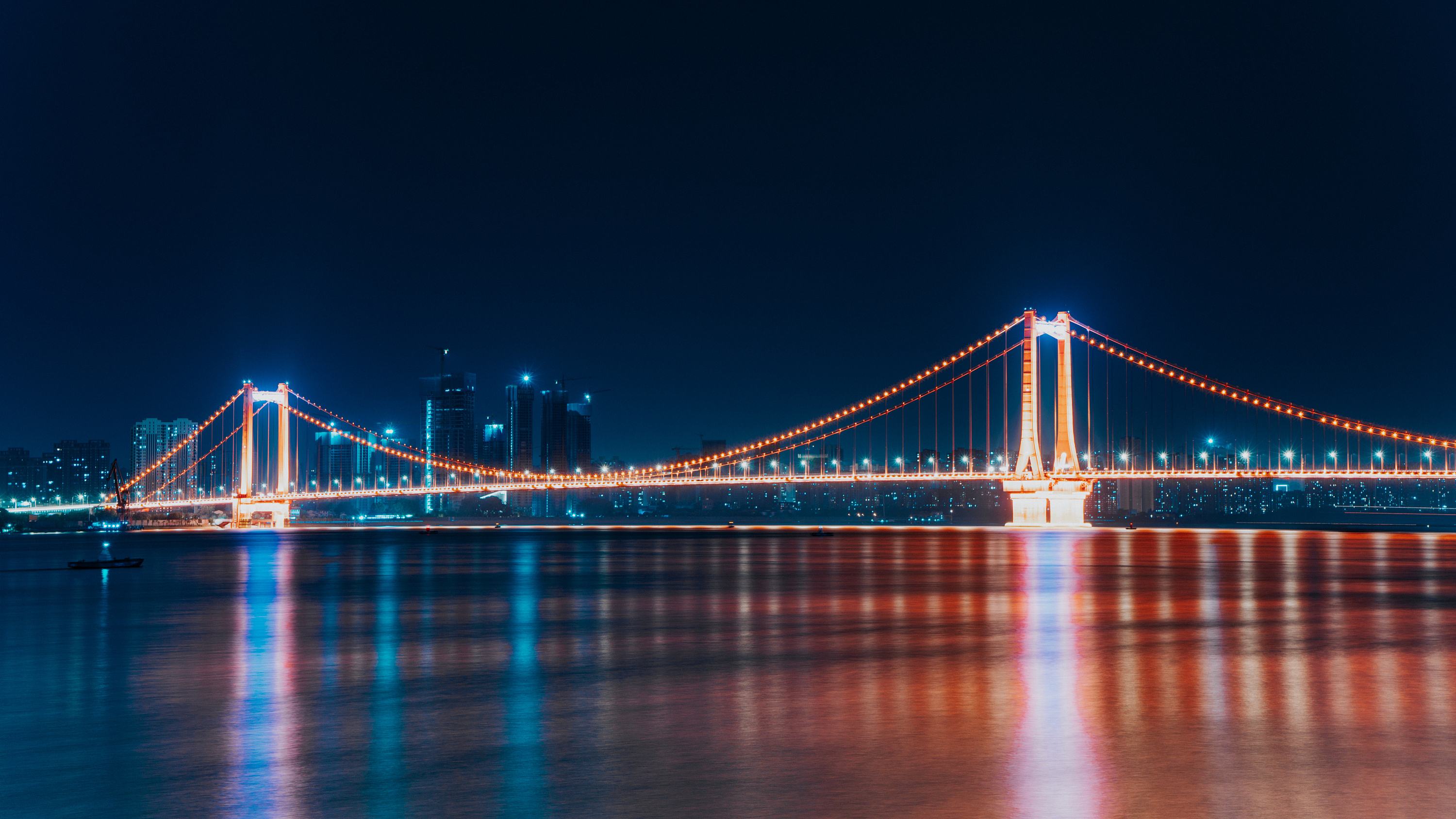Yellow Crane Tower
Bordering on the Yangtze River and crouching on the top of the Snake Hill, the Yellow Crane Tower is one of the three most famous towers on the south bank of the Yangtze River. (the other two are Yueyang Tower in Hunan and Tengwang Tower in Jiangxi)
First built in 223 AD, the tower has a history of over 1700 years. It is not only an important scenic spot, but also a symbol of "piping times of peace" in people's minds. Scholars in the past dynasties wrote hundreds of poems and scores of writings in praise of the magnificent Yellow Crane Tower. The legend about the tower has become a bright pearl of the Chinese literature. Rebuilt in 1985, the Yellow Crane Tower Park occupies a hilly area and consists of towers, pavilions and corridors, forming an architecture complex and a garden complex of man-made and natural scenery. It has become the symbol of Wuhan for its long history, its magnificent outlook and its imposing architectural style.

East Lake
The East Lake is the pride and joy of the people of Wuhan.
Millions of residents here get a lot of fun out of going for a walk along the lakeside in spring, swimming in summer, appreciating sweet laurel in autumn and admiring plum in winter. The lake covers 33 square kilometers and stretches far into the distance. Ancient pagodas and temples scattered in 34 verdant hills around the lake make the scenic spot more historic and imposing. All the six areas of the East Lake have in common green hill, clear waters, an abundance of woods and tropical style of Chu Clture. Perhaps you’ll enjoy yourself most in two of them- -Tingtao Pavilion and Moshan Hill.
Willows dance gracefully and water lily sleeps deeply around Tingtao Pavilion, a three-storey palace building, in front of which the grand and lifelike statue of Qu Yuan is looking up at the sky and sighing sadly at the subjugation of Chu.
On the east side of the lake towers aloft Moshan Hill, where the city of Chu has been set up according to the legend that Zhaolie, King of the Chu State laid an altar and worshiped Heaven there. The imposing Chutian Tower symbolizes the power and prosperity of the ancient State of Chu.
Among all kinds of flowers, plum, lotus and cassia are of great reputation. The National Plum and Lotus Research Centre is set up here. The East Lake used to be a private farm several decades ago. In 1950 the farm was turned into a scenic spot. The government provided an enormous financial support to start. In 1982 the East Lake was rated by the State Council as one of the first group of national key resorts. It receives more than two million tourists a year.

First Bridge over the Yangtze River
For hundreds of years, it had been a dream to cross the natural moat of the Yangtze River.
In 1913, Zhan Tianyou, one of China's well-known railway engineers, visited Wuhan and studied the possibility of the construction of the Yangtze River Bridge. The bridge was decided to be built between the Tortoise Hill in Hanyang and the Snake Hill in Wuchang. Unfortunately, his dream could not come true. Again, six years later, Dr. Sun Yat-sen put forward a proposal to build a Yangtze River Bridge in Wuhan. Then Nanjing Government invited American experts and made a draft plan. Mao Yisheng, a bridge expert, organized for two designs and the construction was about to begin. But because of war and lack of money, no one was able to have the bridge built. After the founding of New China, the central government decided to build the Yangtze River Bridge in Wuhan in 1950. Five years later, news came that the construction would soon begin and it became the focus of world attention. However, more overseas people were half believing and half doubting. Within two years, the Chinese engineers, technicians and workers, with the help of the Soviet experts, completed a double-- deck bridge for the dual use of automobiles and trains. The wish of "turning a deep chasm into a thoroughfare" was fulfilled.
On October 15, 1957, thousands of people in Wuhan were overexcited. Cheering sound could be heard on and under the bridge. Trains, automobiles and pedestrians safely crossed the bridge. More than 30 years have passed. The Wuhan Bridge Bureau of the Railway Ministry has built other ten bridges over the Yangtze River in Nanjing, Chongqing, Zhijiang and Jiujang. Another highway bridge 2.5 kilometers down to "the First Bridge" will be finished and put into use at the beginning of 1995.


